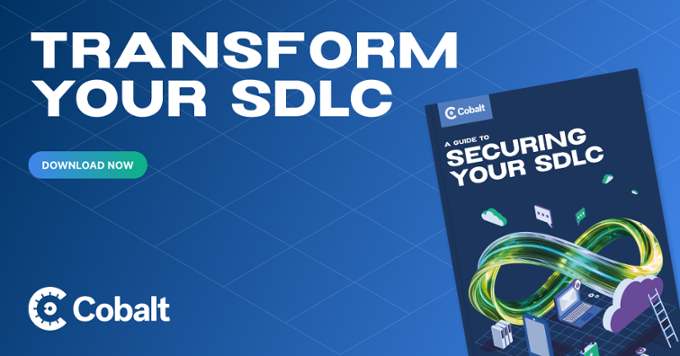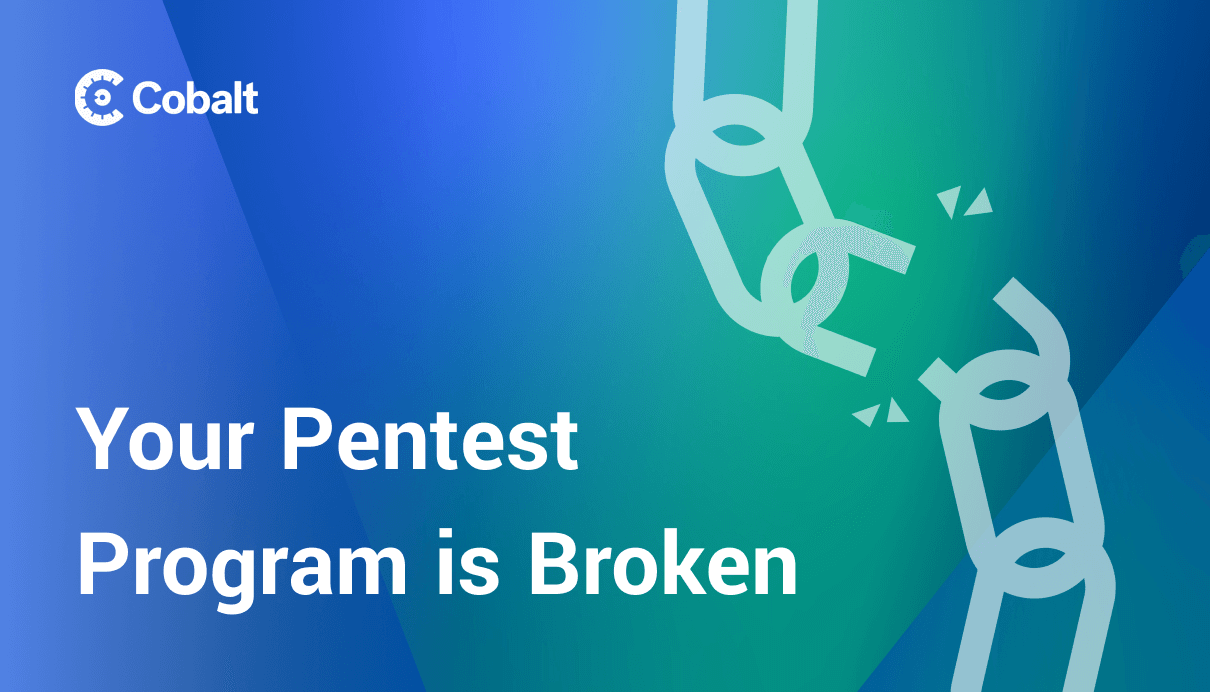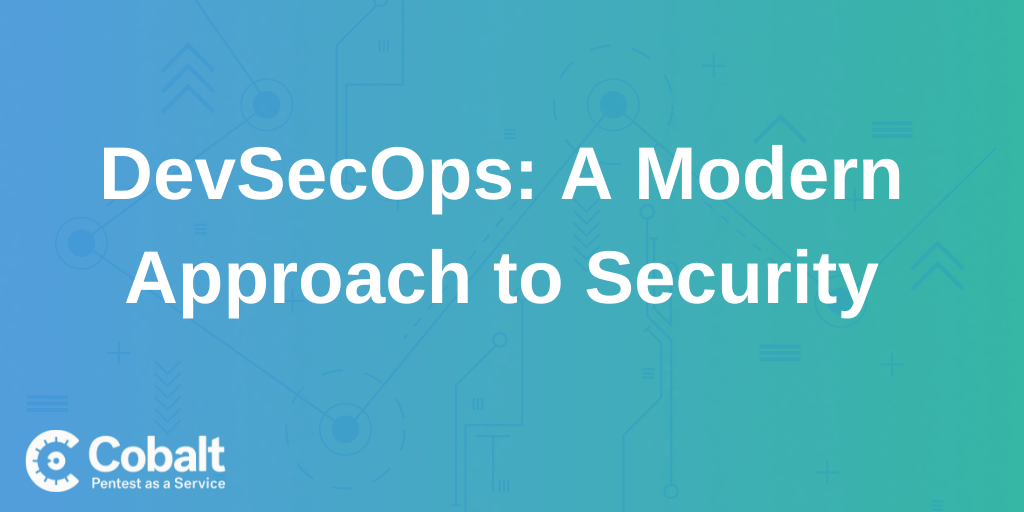Integrating security measures within each stage of the Software Development Life Cycle (SDLC) helps organizations anticipate potential cyber risks before they manifest.
However, this may not be enough for companies with multiple entry points, businesses in fast-evolving sectors that constantly update and iterate on their software, highly targeted industries, or those with regulatory and compliance obligations.
The dynamic nature of cyber threats often necessitates a more aggressive, offensive stance. By adopting offensive security measures, organizations can actively seek out vulnerabilities and test their systems against real-world attack scenarios. This proactive approach goes beyond protocol integration, pushing organizations to challenge and strengthen their defenses within the SDLC actively.
Cobalt's Pentesting as a Service (PtaaS) is a prime example of this integration. Below, we'll explore the key offensive security techniques within the SDLC and address challenges and solutions that arise during its implementation.
Offensive Security within the SDLC
Organizations must think like their adversaries to stay ahead. Integrating offensive security (or "OffSec") tools at the SDLC level helps ensure that software is secure from its inception to deployment.
Ideally, vulnerabilities are identified and fixed during the development process itself rather than post-deployment.
Key Offensive Security Techniques in SDLC
Offensive security encompasses a broad spectrum of techniques, such as:
- Vulnerability Assessment: This entails a systematic review of potential security flaws in an application or network. The outcome of this assessment is a list of vulnerabilities, the associated risks, and an extensive report, which can then be used to reinforce your existing security policies, apply necessary patches, and bolster the organization's overall security stature.
- Penetration Testing: Pentesting is a security assessment that involves progressive simulated attacks on applications or networks to evaluate their security posture. The ultimate aim is to strengthen security by uncovering vulnerabilities and utilizing insights from these breach attempts to enhance policies and controls and patch potential weaknesses.
- Manual pentesting: is an even more thorough set of services that add human expertise to professional security tools. While software can detect standard vulnerability classes, it may miss out on specific design flaws such as business logic exploits. However, manual security testing performed by skilled pentesters can address design, business logic, and compound flaw risks that necessitate human intervention.
- Red Teaming: Red teaming conducts a holistic adversarial attack simulation. It goes beyond pinpointing vulnerabilities and challenges the entire defense system of an organization, encompassing human, physical, and digital aspects.
Red teaming tries to emulate a real-world attacker targeting the whole organization. It includes trying to bypass physical security, social engineering attempts, and more.
Offensive security encompasses other techniques such as threat modeling, security hardening, and security code reviews. Both predictive and reactive techniques are necessary to ensure a well-rounded security posture throughout the SDLC.
Challenges and Solutions in Implementing Offensive Security in SDLC
Integrating offensive security within the SDLC, while essential, is not without its challenges.
For example, cultural resistance can be an impediment to implementing any new strategy despite the undisputed priority of cybersecurity. Another challenge, specific to agile environments, where rapid development and deployment are king, security is sometimes perceived as a hindrance when a development team is racing against the clock to deliver a product feature. Organizations may also deal with complacency if they've never before experienced a cyberattack.
A lack of expertise, particularly at the management level, can also lead to a culture where security is deprioritized. And since security measures, especially sophisticated ones, can be costly, there's sometimes a perception that the return on investment (ROI) on pentesting or other security services isn't tangible, especially when measured against features or improvements that directly impact user experience or revenue.
Of course, nearly every organization faces budget and time constraints at some point, and all of the challenges above contribute to security lapses when a business is under pressure. But the fact is, ignoring or sidelining cybersecurity measures can lead to irreversible damage, both in terms of financial losses and reputational harm.
Best Practices and Solutions for Overcoming Challenges
To overcome the challenges of integrating offensive security within the SDLC, businesses need to address them head-on, fostering an environment where security is seen as an essential part of the development process. This often requires:
- Promoting a Culture of Continuous Learning: It's crucial to ensure your team has both the technical skills and a security-first mindset. Regular upskilling can create an internal ecosystem where security becomes an ingrained habit rather than a forced obligation.
- Optimizing Processes with Automation: While human expertise is indispensable, especially in identifying complex vulnerabilities, there are repetitive tasks that machines can handle more efficiently. Businesses may choose to automate in areas like vulnerability assessments to save time, reduce human error, and ensure results are consistent across the board.
- Embedding Security Advocates within Development Teams: Instead of leaving security as an isolated function, organizations should embed security champions within development teams to guide and implement offensive security techniques, ensuring that the code produced meets the necessary security standards.
- Tapping into Expertise: Companies don't always have the in-house expertise to handle sophisticated attacks. But services like PtaaS can give businesses continuous, on-demand pentesting to ensure their systems are constantly checked for vulnerabilities in real-time, even without a dedicated team of experts internally.
Elevating Your Offensive Security Posture with PtaaS
In today's cybersecurity climate, it's not about whether you'll face a cyber threat, but when — and preparation is the key to resilience.
Incorporating offensive security measures within the SDLC ensures that proprietary and third-party software components are evaluated for vulnerabilities from inception to deployment.
However, the application of offensive security shouldn't be confined to the SDLC alone. Given the dynamic nature of IT environments, regular assessments should also be made post-deployment to account for changing configurations, new threats, and evolving IT landscapes.
To truly fortify their digital defenses, businesses need a partner that understands the intricacies of the cyber realm. Pentesting as a Service (PtaaS) is designed to address this very need, offering a continuous, real-time evaluation of systems against emerging threats. With the expertise that Cobalt brings to the table, organizations can ensure that they not only detect vulnerabilities but also receive actionable insights to address them proactively.









